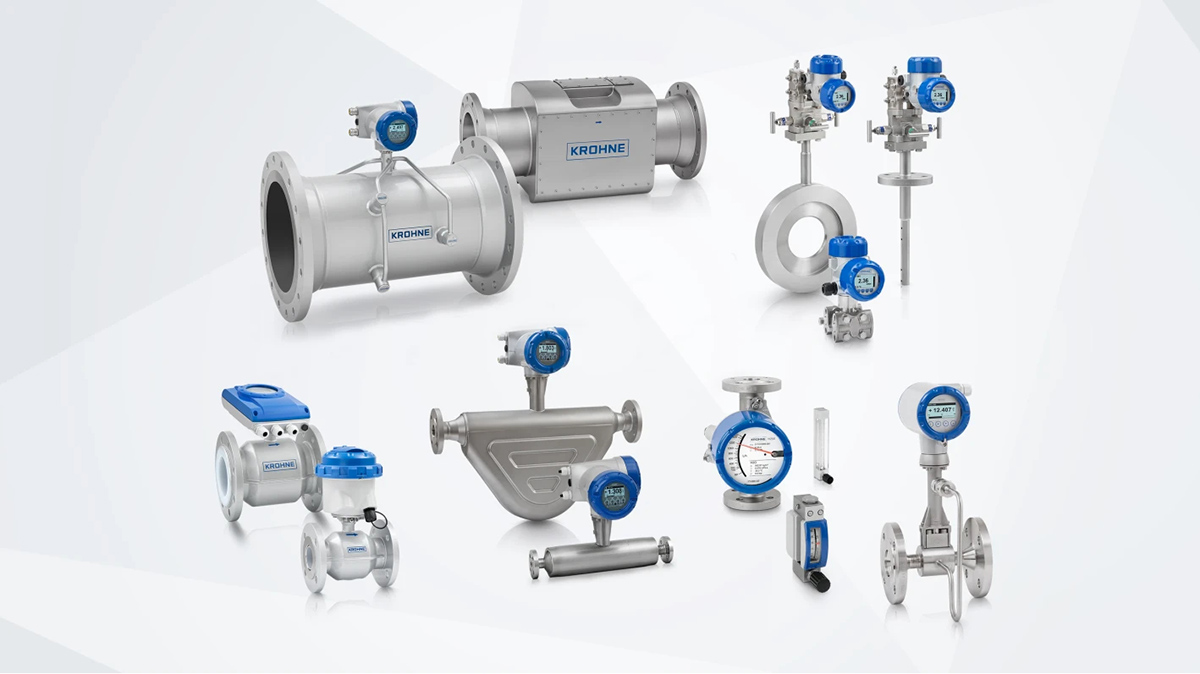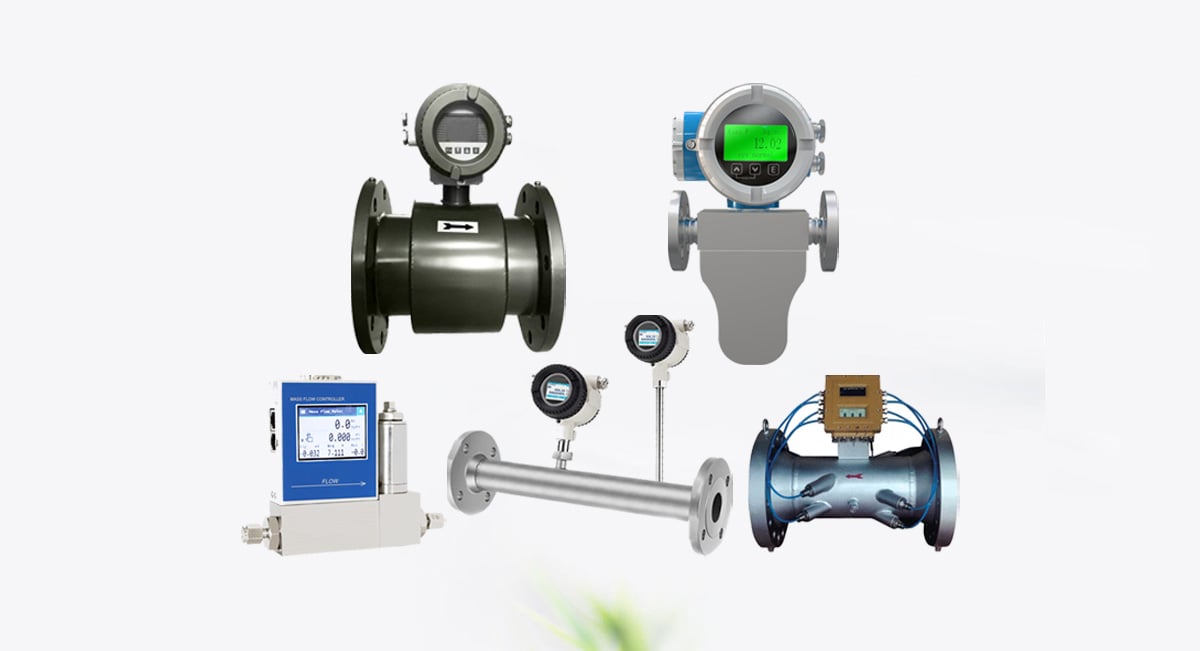Flow meters are essential tools used to measure the movement of fluids—whether liquids, gases, or steam—across various industrial and commercial applications. Accurate flow measurement is crucial for ensuring process efficiency, regulatory compliance, cost control, and safety. Flow meters are broadly categorized into differential pressure flow meters, positive displacement flow meters, volumetric flow meters, and mass flow meters. Each type has distinct features, principles, applications, advantages, and disadvantages.
Table of Contents
Relate Posts:
What Are Flow Meters?
Flow meters are instruments designed to measure the flow rate of a fluid—either by volume (e.g., liters per second) or mass (e.g., kilograms per second). The data they provide is critical for:
- Process Control: Optimizing efficiency in industries such as oil and gas, water treatment, and manufacturing.
- Energy Efficiency: Monitoring flow rates in HVAC systems.
- Billing and Compliance: Accurately measuring fluid usage in utilities and adhering to regulations.
Different flow meters operate on various principles to accommodate the unique characteristics of the fluids they measure.
1. Differential Pressure Flow Meters
What’s Differential Pressure flow meter?
Differential pressure (DP) flow meter is among the most commonly used flow meters worldwide, thanks to their simplicity, reliability, and versatility. They measure flow by monitoring the pressure drop across a restriction in the pipe.

Working Principle
DP flow meters operate based on Bernoulli’s equation, which states that an increase in the velocity of a fluid corresponds to a decrease in pressure. A constriction such as an orifice plate, venturi tube, or flow nozzle is placed in the pipeline, creating a pressure drop. The difference in pressure before and after the constriction is used to calculate the flow rate.
Examples of Differential Pressure Flow Meters
| Differential Pressure Flow Meters | Applications | Advantages | Limitations |
|---|---|---|---|
| Orifice Plate Flow Meters | Steam, natural gas, and clean water systems | Simple design, cost-effective | Permanent pressure loss, requires frequent maintenance |
| Venturi Tubes | Clean liquids, oil pipelines, and wastewater treatment | Minimal pressure loss, high accuracy for clean fluids | Bulkier design, higher cost than orifice plates |
| Flow Nozzles | High-velocity and high-pressure systems in power plants and chemical industries | Durable, capable of handling extreme conditions | Permanent pressure drop, less accurate than venturi tubes |
| Pitot Tubes | Air flow measurement in HVAC systems and ducts | Compact design, easy to install | Sensitive to flow disturbances, less accurate for liquids |
2. Positive Displacement Flow Meters
What’s positive displacemnet flow meter?
Positive displacement (PD) flow meters are mechanical devices that measure the actual volume of fluid passing through the meter by dividing it into fixed increments. These meters are highly accurate and ideal for low-flow and viscous fluid applications.

Working Principle
PD meters use rotating or oscillating components, such as pistons, gears, or rotors, to create chambers. Fluid fills these chambers, and the motion of the components is directly proportional to the volume of the fluid. The number of rotations or oscillations is recorded to calculate the flow rate.
Examples of Positive Displacement Flow Meters
| Positive Displacement Flow Meters | Applications | Advantages | Limitations |
|---|---|---|---|
| Oval Gear Meters | Pharmaceuticals and food processing | High accuracy for a range of viscosities | Can clog with debris or particulates |
| Rotary Piston Meters | Fuel and oil measurement in refineries | High accuracy for viscous and low-flow applications | Moving parts require regular maintenance |
| Gear Meters | Adhesives, syrups, lubricants, and paints | Handles high-viscosity fluids, precise measurement | Not suitable for dirty fluids with particulates |
| Nutating Disk Meters | Residential and commercial water metering | Simple design, reliable for low-flow applications | Limited suitability for industrial-scale flows |
3. Volumetric Flow Meters
What is Volumetric Flow Meters?
Volumetric flow meters measure the flow of fluids by volume per unit of time. They are versatile and widely used for clean liquids, gases, and steam in applications like water distribution, HVAC systems, and industrial processes.

How Do Volumetric Flow Meters Work?
Volumetric flow meters calculate the flow rate by measuring the velocity of the fluid and combining it with the cross-sectional area of the pipe. Different technologies, including mechanical, electromagnetic, ultrasonic, and vortex-based designs, are used depending on the fluid type and application.
Examples of Volumetric Flow Meters
| Volumetric Flow Meters | Applications | Advantages | Limitations |
|---|---|---|---|
| Electromagnetic Flow Meters (Mag Meters) | Wastewater, slurries, and chemical processing | No moving parts, highly accurate for conductive liquids | Only works with conductive fluids |
| Vortex Flow Meters | Steam, industrial gases, and liquids with moderate impurities | Handles a wide range of fluids, including steam, gases, and liquids, and suitable for high-pressure and high-temperature conditions | Sensitive to vibrations and flow disturbances |
| Turbine Flow Meters | Clean water, irrigation systems, and HVAC systems | High accuracy, compact, and lightweight | Sensitive to particulates; moving parts require maintenance |
| Ultrasonic Flow Meters | Municipal water supply, large pipelines, and HVAC systems | Non-intrusive options available, suitable for large pipe sizes | High initial cost and less accurate for fluids with bubbles or particulates |
4. Mass Flow Meters
What’s mass flow meter?
Mass flow meter measures the mass of fluid flowing through the meter, providing accurate data even when fluid density, temperature, or pressure changes. They are ideal for precise applications like chemical dosing and gas monitoring.

Working Principle
Mass flow meters use principles such as the Coriolis effect or thermal heat transfer. Coriolis meters detect phase shifts caused by fluid motion in vibrating tubes, while thermal meters measure the heat dissipated by the fluid to calculate flow rate.
Types of Mass Flow Meters
| Mass Flow Meters | Applications | Advantages | Limitations |
|---|---|---|---|
| Coriolis Flow Meters | Chemical processing, food and beverage industries | Direct mass measurement, extremely accurate | Expensive, sensitive to vibrations |
| Thermal Mass Flow Meters | Compressed air, gas flow monitoring, and environmental studies | Ideal for low-flow gases, no moving parts | Limited to gases, accuracy affected by gas composition |
How to Choose the Right Flow Meter
Selecting the right flow meter depends on fluid properties, process requirements, and operating conditions. Here are key considerations:
- Fluid Properties
- Is the fluid a liquid, gas, or steam?
- Does it contain particulates, is it viscous, or conductive?
- Measurement Requirements
- Do you need volumetric or mass flow data?
- What level of accuracy is required?
- Process Conditions
- What are the temperature and pressure ranges?
- Are there space constraints or external vibrations?
- Maintenance Needs
- Is regular maintenance feasible?
- Are you looking for low-maintenance solutions?
- Budget
- Consider both initial cost and long-term maintenance expenses.
- Advanced meters like Coriolis may have higher upfront costs but reduce lifecycle costs.
Understanding the four main types of flow meters and their applications is essential for selecting the right one. By evaluating fluid properties, accuracy needs, and budget, you can ensure efficient and reliable flow measurement for your application.









Leave a comment